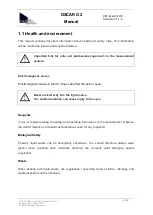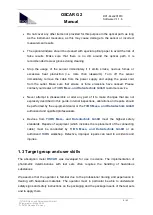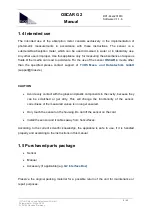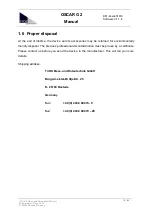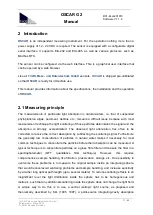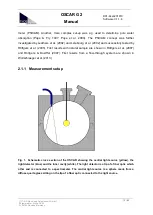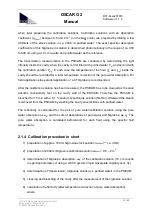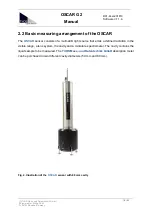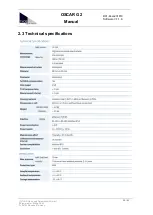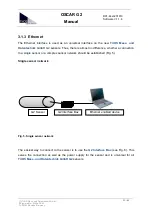
OSCAR G2
Manual
D01-44en201810
Software V.1.1.6
(C)TriOS Mess- und Datentechnik GmbH
Bürgermeister-Brötje-Str. 25
D- 26180 Rastede/Germany
11 / 62
2
Introduction
OSCAR
is an independent measuring instrument. For the operation nothing more than a
power supply of 12 - 24 VDC is required. The sensor is equipped with a configurable digital
serial interface. It supports EIA-232 and EIA-485 as well as various protocols, such as
Modbus RTU.
The sensor can be configured via the web interface. This is a graphical user interface that
can be opened by a web browser.
Like all
TriOS Mess- und Datentechnik GmbH
sensors,
OSCAR
is shipped pre-calibrated
so that
OSCAR
is ready for immediate use.
This manual provides information about the specifications, the installation and the operation
of
OSCAR.
2.1 Measuring principle
The measurements of particulate light absorption in natural waters, i.e. that of suspended
phytoplankton algae, sediment, detritus etc., remains a difficult issue because with most
measurement technique the light scattering of those particles deteriorates the signal and the
absorption is strongly overestimated. The observed light attenuation has often to be
corrected to receive the correct absorption by subtracting the scattering signal. Furthermore
the generally low concentration of particles in natural water makes it necessary for most
common techniques to concentrate the particles before their absorption can be measured. A
typical technique is to concentrate particles on a glass fibre filter and measure the filter in a
spectrophotometer
(QFT,
quantitative
filter
technique).
However,
this
requires
comprehensive sample handling, like filtration, preservation, storage etc. One possibility to
overcome these problems is to measure the original sample inside an integrating sphere,
that would reduce/avoid scattering problems and sample handling, and increase sensitivity
by a rather long optical path length (up to several meters). To reduce scattering effects to an
insignificant level the light distribution inside the sphere has to be homogeneous and
isotropic, such that any additional scattering inside the sphere does not change the light field.
A simple way to do this is to use a central isotropic light source, as proposed and
theoretically described by Kirk (1995, 1997), a point-source integrating-cavity absorption






